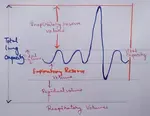Uses of Minerals
We will discuss here about the importance and uses of minerals and natural resources in our life. Modern civilization is based on minerals and several other natural resources. These are very much important for better living.
We have already discussed the utilities of iron, steel, copper and aluminium in the daily life of modern civilization. Zinc is another useful metal, which is used for preparing different types of electrical cells. Zinc plating prevents rusting of iron. Bronze is an alloy of zinc and copper, which is used to make ornaments and to cast statues. Gold, silver, platinum are the most valuable metals used exclusively for making precious ornaments.
Coal and petroleum are the most valuable minerals stored under the Earth’s crust. They have major contribution to the total energy supply.
Scientists have discovered many radioactive minerals like radium and urenium. Urenium is a rare mineral, which can be used to generate enormous quantity of energy within nuclear reactors. This type of energy is called nuclear energy. These radioactive elements must be used for benefit of mankind but not for destruction.
“The Earth has enough for everybody’s need but not enough for everybody’s greed”, said Mahatma Gandhi. So we should utilize natural resources in controlled manner and must take serious steps to conserve it.
From Uses of Minerals to HOME PAGE
Recent Articles
-
Regulation of Respiration | Respiratory Centres | Inspiratory Area |
Oct 14, 25 12:13 AM
Respiratory Centre is the area that controls the rate of respiration and it is observed to be located in medulla oblongata and pons. Respiratory Centre has the following will dispersed components like… -
Explain Transport of Gases | External Respiration | Tissue Respiration
Oct 09, 25 11:35 PM
In humans gaseous exchange is completed in the following ways the steps are - External Respiration or Breathing - Breathing in false taking in of Oxygen and giving out of carbon dioxide in the body. M… -
Kind and Number of Teeth | Location of Teeth in Mouth | Care of Teeth
Sep 11, 25 12:52 AM
Kind and Number of Teeth -
The Gaseous Exchange | Transport of Oxygen | Haldane Effect |
Sep 10, 25 02:44 PM
Oxygen carrying capacity of blood is 20 ml for 100m but 3% of dissolved in plasma and 97% of the oxygen combines with haemoglobin to form a loose reversible Complex called oxyhaemoglobin and is transp… -
Respiratory Volumes and Capacities | Tidal Volume | Dead Space
Sep 10, 25 02:46 AM
Explain respiratory volumes and capacities: Tidal Volume - Tidal volume is the volume of air inspired or expired in relaxed or resting position. Amount of tidal volume is about 500 m and it consists o…






New! Comments
Have your say about what you just read! Leave me a comment in the box below.